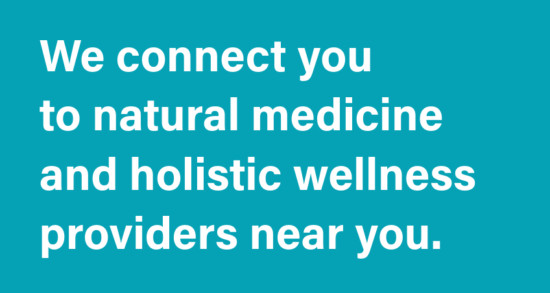Earthing and Grounding: A Natural Path to Wellness
Earthing, also called grounding, is a natural health practice involving direct physical contact with the earth. This can mean walking barefoot on grass, sand, or soil, or even swimming in a lake or ocean.
While people have connected with nature this way for thousands of years, scientists have only recently begun to explore the possible health benefits. As more people turn to natural wellness solutions, earthing is becoming a popular way to support physical and mental health.
How Earthing Works
The earth carries a mild negative electric charge. The theory behind grounding is that direct contact with the ground allows electrons from the earth to flow into your body.
These electrons may help balance your body's natural electrical systems and reduce the damage caused by free radicals—unstable molecules that can lead to inflammation and illness.
Key ideas:
- The earth is rich in free electrons.
- Physical contact with the ground may allow these electrons to enter your body.
- This process could neutralize harmful free radicals and reduce inflammation.
While more research is still needed, early studies suggest grounding might improve sleep, reduce pain, and support the body's healing processes. Some evidence also shows it may thin the blood, lower stress hormones, and improve overall well-being.

Potential Health Benefits of Earthing
Although not all benefits are fully proven, many people who practice earthing report improvements in their health. Here are some of the most commonly reported effects:
1. Reduced Inflammation
Some studies indicate that grounding may reduce inflammation, which plays a role in many chronic illnesses such as arthritis and heart disease.
2. Pain Management
Many people with chronic pain say they feel better after earthing, possibly due to reduced inflammation or improved circulation.
3. Better Sleep
Grounding is believed to help reset the body's internal clock and may improve sleep quality by reducing nighttime stress and balancing hormones.
4. Lower Stress Levels
Spending time outdoors in contact with the earth has been shown to lower cortisol, a hormone linked to stress.
5. Boosted Energy
People often say they feel more awake and clear-headed after grounding sessions.
6. Improved Circulation
By reducing blood thickness, grounding may help blood flow more freely, supporting cardiovascular health.
Although these outcomes are promising, more large-scale scientific research is needed to confirm all the potential benefits. Still, grounding is considered safe and easy to try, making it a low-risk addition to any wellness plan.

Easy Ways to Practice Grounding
You don't need fancy gear or much time to begin earthing. Here are some simple ways to get started:
Outdoors:
- Go Barefoot: Walk on natural surfaces like grass, soil, sand, or even concrete.
- Sit or Lie on the Ground: Relax on the earth in a park, backyard, or at the beach.
- Swim in Natural Water: Oceans, lakes, and rivers are great for grounding.
- Garden: Digging in the dirt with your hands can also help you connect to the earth.
Indoors (When Going Outside Isn't an Option):
- Grounding Mats and Sheets: These connect to grounded outlets and are designed to mimic the earth's electrical charge.
- Wearable Grounding Devices: Bands and patches connect to grounding sources inside your home.
Helpful Tips:
- Aim for 20 to 30 minutes of grounding each day.
- Pick safe and clean locations for outdoor grounding.
- Use this time to slow down and pay attention to your body's sensations.
Clearing Up Common Myths and Questions
As grounding grows in popularity, so do the myths. Here are a few facts to help you get started confidently:
Myth: Earthing only works in the countryside.
Fact: You can ground yourself in urban areas too—city parks, backyards, and beaches all work.

Myth: You need to spend money on special devices.
Fact: Grounding doesn't have to cost anything. Going outside barefoot is completely free and very effective.
FAQ: Is grounding safe for everyone?
Answer: Yes, it's safe for most people. However, those with implanted medical devices like pacemakers should check with their doctor before using electrical grounding equipment.
FAQ: How long does it take to see results?
Answer: Some people feel better after just one session, while others notice changes after several weeks of consistent practice.
FAQ: Can I do this during winter?
Answer: Yes, but be cautious in cold temperatures. Dress appropriately, and limit your exposure to avoid getting too cold.
Making Earthing Part of Your Routine
Getting started with earthing is simple and doesn't require a complete lifestyle change. Here's how to make it a regular part of your wellness journey:
- Start Small: Try five to ten minutes daily and gradually increase the time.
- Keep Track: Use a journal to note how you feel before and after grounding.
- Combine with Other Practices: Add earthing to your yoga, meditation, or deep breathing sessions for added benefits.
- Be Consistent: Like any health habit, the key to success is regular practice.
Share and Connect: Join online communities or wellness groups to learn from others and share your experiences.

Earthing and grounding offer a simple, natural way to reconnect with the earth and support your health. The potential benefits of reducing stress and improving sleep make it worth trying. Whether walking barefoot through the grass or just sitting quietly in a park, spending time in contact with nature could help you feel more balanced, relaxed, and energized.
If you're curious about this practice, step outside, take off your shoes, and give it a try—your body just might thank you.



